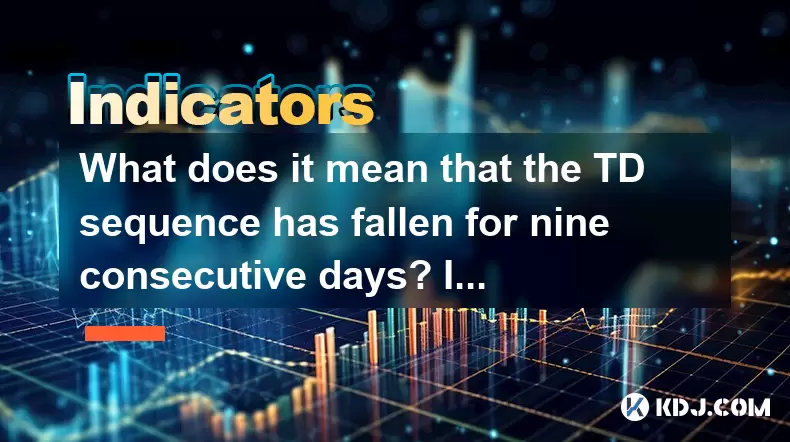-
 Bitcoin
Bitcoin $120400
1.77% -
 Ethereum
Ethereum $3615
7.90% -
 XRP
XRP $3.580
17.84% -
 Tether USDt
Tether USDt $1.001
0.06% -
 BNB
BNB $729.4
1.25% -
 Solana
Solana $179.9
5.04% -
 USDC
USDC $0.0000
0.01% -
 Dogecoin
Dogecoin $0.2311
8.22% -
 TRON
TRON $0.3226
4.04% -
 Cardano
Cardano $0.8490
12.85% -
 Hyperliquid
Hyperliquid $46.45
0.72% -
 Stellar
Stellar $0.4913
8.54% -
 Sui
Sui $4.027
2.00% -
 Chainlink
Chainlink $18.51
11.67% -
 Hedera
Hedera $0.2818
21.51% -
 Avalanche
Avalanche $24.03
7.40% -
 Bitcoin Cash
Bitcoin Cash $508.5
2.90% -
 Shiba Inu
Shiba Inu $0.00001496
3.24% -
 UNUS SED LEO
UNUS SED LEO $8.961
1.83% -
 Toncoin
Toncoin $3.264
3.13% -
 Litecoin
Litecoin $104.6
8.15% -
 Polkadot
Polkadot $4.389
6.11% -
 Uniswap
Uniswap $9.924
10.63% -
 Monero
Monero $337.9
0.49% -
 Pepe
Pepe $0.00001376
2.79% -
 Bitget Token
Bitget Token $4.830
2.46% -
 Ethena USDe
Ethena USDe $1.001
0.05% -
 Dai
Dai $1.000
0.02% -
 Aave
Aave $325.2
1.66% -
 Bittensor
Bittensor $423.7
-0.85%
What does it mean that the TD sequence has fallen for nine consecutive days? Is the reversal signal credible?
A nine-day falling TD sequence in crypto signals strong bearish momentum, indicating potential trend exhaustion and a possible reversal, though confirmation from other indicators is crucial.
Jun 18, 2025 at 12:07 pm

Understanding the TD Sequence in Cryptocurrency Analysis
The TD sequence, short for Tom Demark sequence, is a technical indicator widely used in cryptocurrency trading to identify potential reversal points in price trends. Developed by market analyst Tom Demark, this tool counts the number of periods (candles) where specific conditions are met, aiming to predict when an asset might reverse its direction. In crypto markets, which are known for their high volatility and rapid trend shifts, the TD sequence provides traders with structured signals.
When applied to candlestick charts, the TD sequence identifies setups based on consecutive closes relative to prior candles. A buy setup or sell setup is formed after a sequence of 1 through 8 or 9 bars meeting these predefined criteria. The completion of the ninth bar often signals a potential trend exhaustion point, suggesting that a reversal may be imminent.
What Does It Mean When the TD Sequence Falls for Nine Consecutive Days?
A nine-day falling TD sequence typically indicates a strong bearish momentum in the market. Each completed TD count from 1 to 9 suggests that selling pressure has been consistent over successive periods. When this happens across nine days without interruption, it implies that the downtrend is not only persistent but also gaining strength.
In the context of cryptocurrencies like Bitcoin or Ethereum, such a signal could occur during a prolonged bear market phase or following a sharp correction after a bullish run. Traders closely monitor this pattern because it may suggest that sellers are dominating the market and buyers are hesitant to step in. However, the completion of the ninth count doesn't automatically guarantee a reversal — it merely highlights a potential exhaustion point.
Key aspects to consider:
- Duration: A nine-day countdown must occur within a clearly defined downtrend.
- Price Behavior: Candles should meet the TD condition of closing lower than two bars prior, initiating a new count.
- Volume: Increasing volume during the countdown can reinforce the validity of the signal.
Evaluating the Reversal Signal: Is It Reliable?
While the TD sequence is respected for its ability to detect possible turning points, it is not infallible. Many experienced traders treat it as a confirmation tool rather than a standalone strategy. Its reliability depends heavily on confluence with other indicators and broader market sentiment.
One common pitfall is mistaking a completed countdown for an automatic reversal. In highly volatile assets like cryptocurrencies, prices may continue trending even after completing the ninth bar. This is why many traders wait for additional confirmation before acting.
Factors that enhance credibility:
- Confluence with Support/Resistance Levels: If the TD-9 occurs near a key support or resistance zone, the likelihood of a reversal increases.
- Oscillator Divergence: Tools like RSI or MACD showing divergence at the same time as the TD-9 can increase confidence.
- Candlestick Patterns: Bullish reversal patterns such as hammer, engulfing, or morning star appearing around TD-9 heighten the probability of a turnaround.
How to Use the TD Sequence in Crypto Trading Effectively
To apply the TD sequence effectively in your crypto trading strategy, follow these detailed steps:
- Identify Trend Direction First: Determine whether the market is in a clear uptrend or downtrend. The TD sequence works best when used within a defined trend.
- Mark the Start of the Setup: For a sell setup, look for a close that is less than the close two bars earlier. Begin counting once you find 13 such bars with this condition (TD setup initiation).
- Begin the Countdown: After the setup completes, initiate the countdown. A valid countdown requires each bar's close to be less than the close four bars earlier. Count until reaching 9.
- Monitor Price Action at TD-9: At this stage, do not assume a reversal will happen immediately. Observe how price reacts — does it bounce, or does it continue downward?
- Wait for Confirmation Candles: Look for bullish or bearish candlestick formations post-TD-9 to confirm the reversal or continuation.
- Combine with Other Indicators: Integrate tools like Fibonacci retracement levels, moving averages, or volume indicators to filter out false signals.
By combining multiple layers of analysis, traders can significantly improve the accuracy of the TD sequence in predicting real reversals.
Common Misinterpretations and Pitfalls in Using TD Sequence
Traders often misinterpret the TD sequence due to several misconceptions. One of the most common mistakes is assuming that the TD-9 always leads to a reversal. In reality, especially in strong trending markets, the price may simply reset and begin a new TD sequence instead of reversing.
Another frequent error involves incorrectly identifying the start of a TD setup. Since the TD sequence relies on precise rules regarding price comparison between bars, miscalculating the setup can lead to false countdowns and missed opportunities.
Additionally, some traders ignore the importance of market context. Applying the TD sequence during sideways or choppy markets may result in numerous false signals. It’s crucial to ensure that the market is exhibiting a clear directional bias before relying on TD signals.
Lastly, overlooking the timeframe can distort the effectiveness of the TD sequence. A TD-9 on a daily chart carries more weight than one on a 1-hour chart. Aligning the chosen timeframe with your trading strategy is essential.
Frequently Asked Questions (FAQs)
Q1: Can the TD sequence be used on all types of cryptocurrencies?
Yes, the TD sequence can be applied to any cryptocurrency that exhibits sufficient price movement and liquidity. However, its effectiveness may vary depending on the coin's volatility and trading volume.
Q2: What should I do if the price continues falling after TD-9?
If the price continues to fall after TD-9, it may indicate a stronger bearish trend. Consider waiting for additional signals such as bullish divergence, support level testing, or reversal candlesticks before entering a trade.
Q3: How does the TD sequence compare to other reversal indicators like RSI or MACD?
The TD sequence focuses specifically on price structure and timing, while RSI measures overbought or oversold conditions, and MACD tracks momentum. Combining TD with RSI or MACD can provide a more comprehensive view of potential reversals.
Q4: Is the TD sequence suitable for intraday trading in crypto markets?
Yes, the TD sequence can be applied to intraday charts. However, due to increased noise and volatility in shorter timeframes, it's advisable to use it alongside other filters like volume or order flow data for better accuracy.
Disclaimer:info@kdj.com
The information provided is not trading advice. kdj.com does not assume any responsibility for any investments made based on the information provided in this article. Cryptocurrencies are highly volatile and it is highly recommended that you invest with caution after thorough research!
If you believe that the content used on this website infringes your copyright, please contact us immediately (info@kdj.com) and we will delete it promptly.
- MEXC's Q2 Domination: Riding the Crypto Wave to Market Leadership
- 2025-07-18 18:30:12
- Caldera (ERA) Takes Flight: Binance Listing Ignites Crypto Surge
- 2025-07-18 19:10:13
- Hex Trust and Algorand: Institutional Staking Rewards Take Center Stage
- 2025-07-18 19:50:13
- XRP, Ethereum, and the Crypto Rotation: Where's the Smart Money Going?
- 2025-07-18 19:15:13
- DeFi Lending, Fintech, and Morpho: A New Era?
- 2025-07-18 19:50:13
- Ethereum, Litecoin, and Institutional Crypto: What's the Deal?
- 2025-07-18 19:55:13
Related knowledge

Advanced RSI strategies for crypto
Jul 13,2025 at 11:01am
Understanding the Basics of RSI in Cryptocurrency TradingThe Relative Strength Index (RSI) is a momentum oscillator used to measure the speed and chan...

Crypto RSI for day trading
Jul 12,2025 at 11:14am
Understanding RSI in the Context of Cryptocurrency TradingThe Relative Strength Index (RSI) is a momentum oscillator used to measure the speed and cha...

Crypto RSI for scalping
Jul 12,2025 at 11:00pm
Understanding RSI in the Context of Crypto TradingThe Relative Strength Index (RSI) is a momentum oscillator widely used by traders to measure the spe...

What does an RSI of 30 mean in crypto
Jul 15,2025 at 07:07pm
Understanding RSI in Cryptocurrency TradingRelative Strength Index (RSI) is a momentum oscillator widely used in cryptocurrency trading to measure the...

What does an RSI of 70 mean in crypto
Jul 13,2025 at 06:07pm
Understanding the RSI Indicator in Cryptocurrency TradingThe Relative Strength Index (RSI) is a widely used technical analysis tool that helps traders...

Does RSI work in a bear market for crypto
Jul 16,2025 at 01:36pm
Understanding RSI in Cryptocurrency TradingThe Relative Strength Index (RSI) is a momentum oscillator used by traders to measure the speed and change ...

Advanced RSI strategies for crypto
Jul 13,2025 at 11:01am
Understanding the Basics of RSI in Cryptocurrency TradingThe Relative Strength Index (RSI) is a momentum oscillator used to measure the speed and chan...

Crypto RSI for day trading
Jul 12,2025 at 11:14am
Understanding RSI in the Context of Cryptocurrency TradingThe Relative Strength Index (RSI) is a momentum oscillator used to measure the speed and cha...

Crypto RSI for scalping
Jul 12,2025 at 11:00pm
Understanding RSI in the Context of Crypto TradingThe Relative Strength Index (RSI) is a momentum oscillator widely used by traders to measure the spe...

What does an RSI of 30 mean in crypto
Jul 15,2025 at 07:07pm
Understanding RSI in Cryptocurrency TradingRelative Strength Index (RSI) is a momentum oscillator widely used in cryptocurrency trading to measure the...

What does an RSI of 70 mean in crypto
Jul 13,2025 at 06:07pm
Understanding the RSI Indicator in Cryptocurrency TradingThe Relative Strength Index (RSI) is a widely used technical analysis tool that helps traders...

Does RSI work in a bear market for crypto
Jul 16,2025 at 01:36pm
Understanding RSI in Cryptocurrency TradingThe Relative Strength Index (RSI) is a momentum oscillator used by traders to measure the speed and change ...
See all articles

























































































